Make money selling plants from your own backyard nursery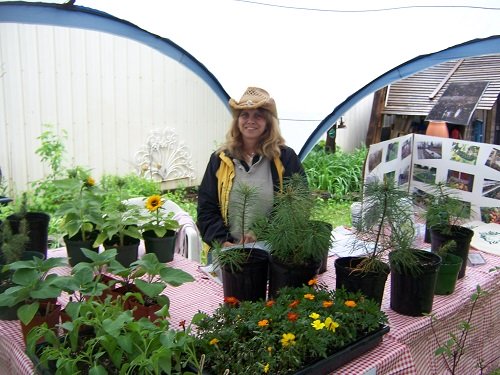 Suzie selling the products of our backyard nursery Suzie selling the products of our backyard nurseryA backyard nursery can be a profitable home business for the new grower or would-be small farmer. I found out this spring that people seem to pay more for ornamental plants than the ones they can eat! You can take advantage of this odd fact by growing and selling plants for money.
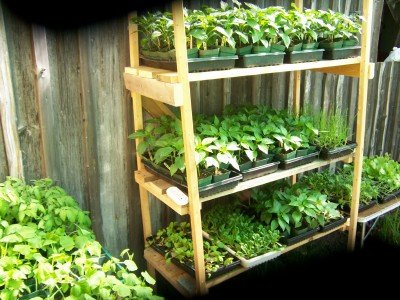 A 'low tech' plant stand in my backyard nursery A 'low tech' plant stand in my backyard nurseryThese facts convinced me to give the business a try. Here's some pointers if you are thinking about starting your own home-based nursery business.
Getting started in the backyard nursery businessIf you've read anything on my site about
starting a market garden you know that I strongly recommend a four-step process to start any business. The four-step process is Planning -> Marketing -> Management -> Production. This process is no less valid when starting a backyard nursery business.
DO NOT start without taking this step; you don't want your fledgling business shut down by the guv'mint just as you are making some money.
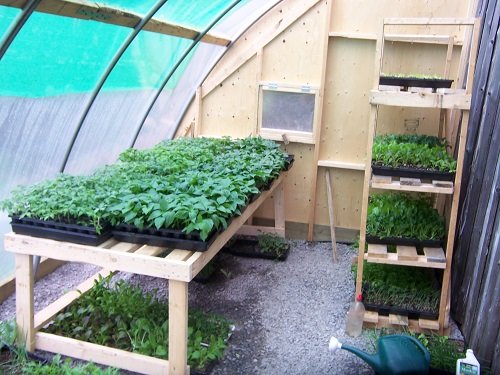 First lean-to greenhouse we built to start plants for sale First lean-to greenhouse we built to start plants for saleSelling your plantsLet's say you've figured out that you would like to start your backyard nursery business by selling 100 each of the 10 most popular bedding plants in your area. Based on our research, we grew marigolds, nasturtiums, sweet pea and a miniature sunflower that turned out to be our best seller. Marketing is all about finding the buyers for your plants. Where will you sell your plants? When will you sell your plants? Will you sell plants all season, or just try to hit the peak early summer period, and sell out in a few weeks? (That's what I did, by the way.)
When do you need to start your plants to have them at optimum age for display and sale? What kind of care will they need? Who will do the work?
CAUTION: do not start this process the other way around; that is, by growing a bunch of plants and then trying to figure out how to sell them. This is a sure way to failure for your small business. Growing your backyard nursery businessOnce you have (at least) one season under your belt, you might be thinking about expanding your business. This will be a lot easier if you kept good records of sales to find out which plants were most popular. (In my case this was a beautiful little dwarf sunflower; I wish I had grown a thousand of them!)
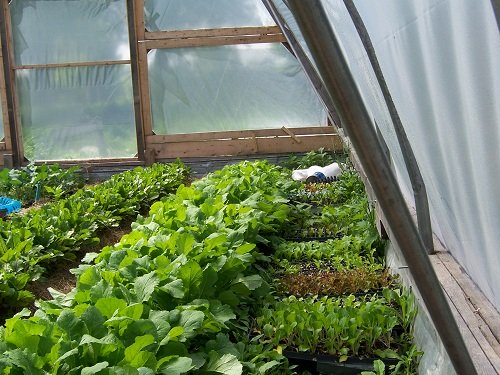 Our 20x30 greenhouse on rails fully planted Our 20x30 greenhouse on rails fully plantedYour home-scale growing techniques may not be efficient at a larger scale. You may have to invest in a greenhouse, automation e.g. irrigation systems, misting boxes, thermostatically-controlled fans. Be sure this investment will pay off. Resources and RecommendationsThe Self-Sufficient Backyard. Chapter 9 - 7 Cash Cow Crops: Read my review of this valuable resource here. Learn to grow food like you have to - BEFORE you have to: The Bootstrap Survival Garden Best Survival Goods Supplier: Survival Frog. Read my review here. If you can find 50 sq ft you can have fresh eggs for breakfast (and maybe barter): The Eggs Factory. Read my review here. Turn your love of gardening into a profitable sideline business: Backyard Garden Profits A Free Report from New Terra Farm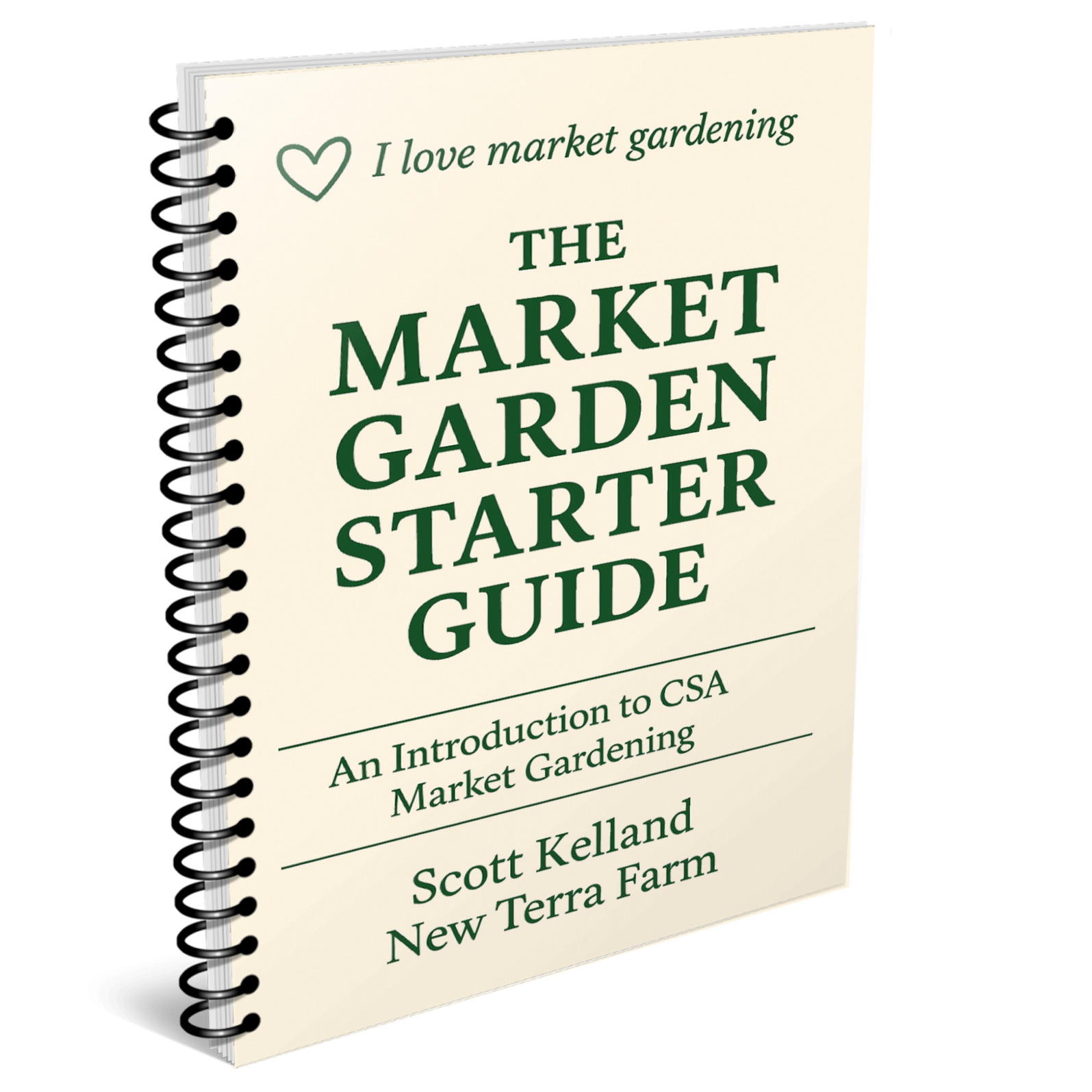 The consumer demand for fresh local organic food has never been higher. Bad news on the supply chain is good news for local growers. Get my free Organic Market Gardener Start-up Guide and see if this is the right time to launch your CSA market garden business. Enter your best email and the Guide will be sent to you right away.
|
See Something You Like? Share!
Got questions to ask, stories to tell?
Share your organic market gardening question, or comment, or story.
I'm an affiliate for some products I promote on this site. This means I get a small commission for a product you buy through a link on one of my pages. This doesn't cost the buyer anything, but provides me an additional income to help support these pages.
Recent Articles
-
Farm grown reviews of products recommended by New Terra Farm
Dec 04, 25 06:26 AM
Find great farm and garden products in my farm grown reviews -
Best Chicken Coop and Accessories for Small Farms and Homesteads
Nov 30, 25 09:18 AM
Looking for the best chicken coop? Here are the top coops, accessories, nest boxes, and gear to build a safe, productive poultry setup. -
Community Supported Agriculture Marketing Ideas To Sell Out The Season
Nov 05, 25 05:18 AM
Authentic Community Supported Agriculture marketing ideas to grow loyalty, boost sign-ups, and sell out your CSA every year



